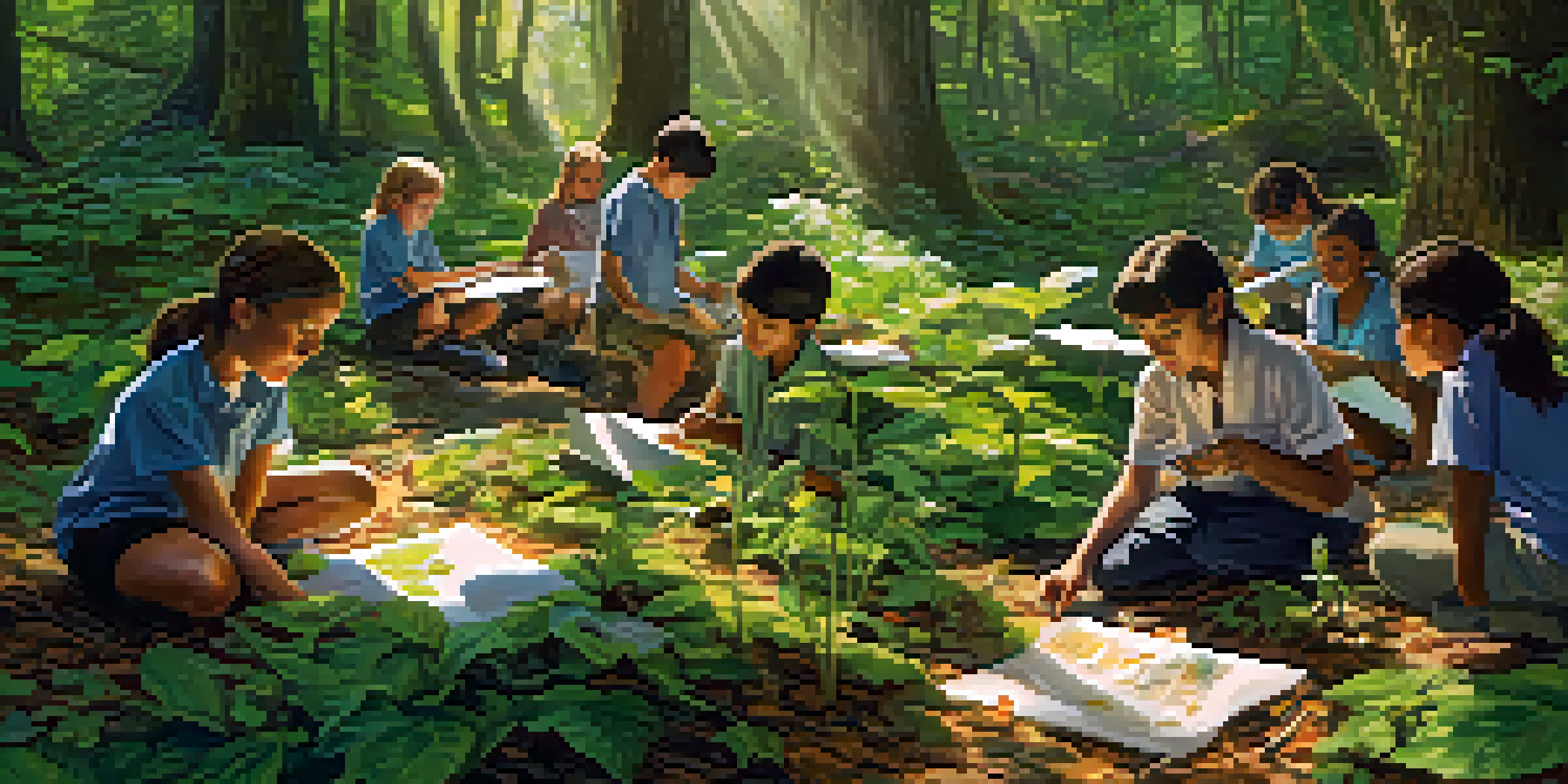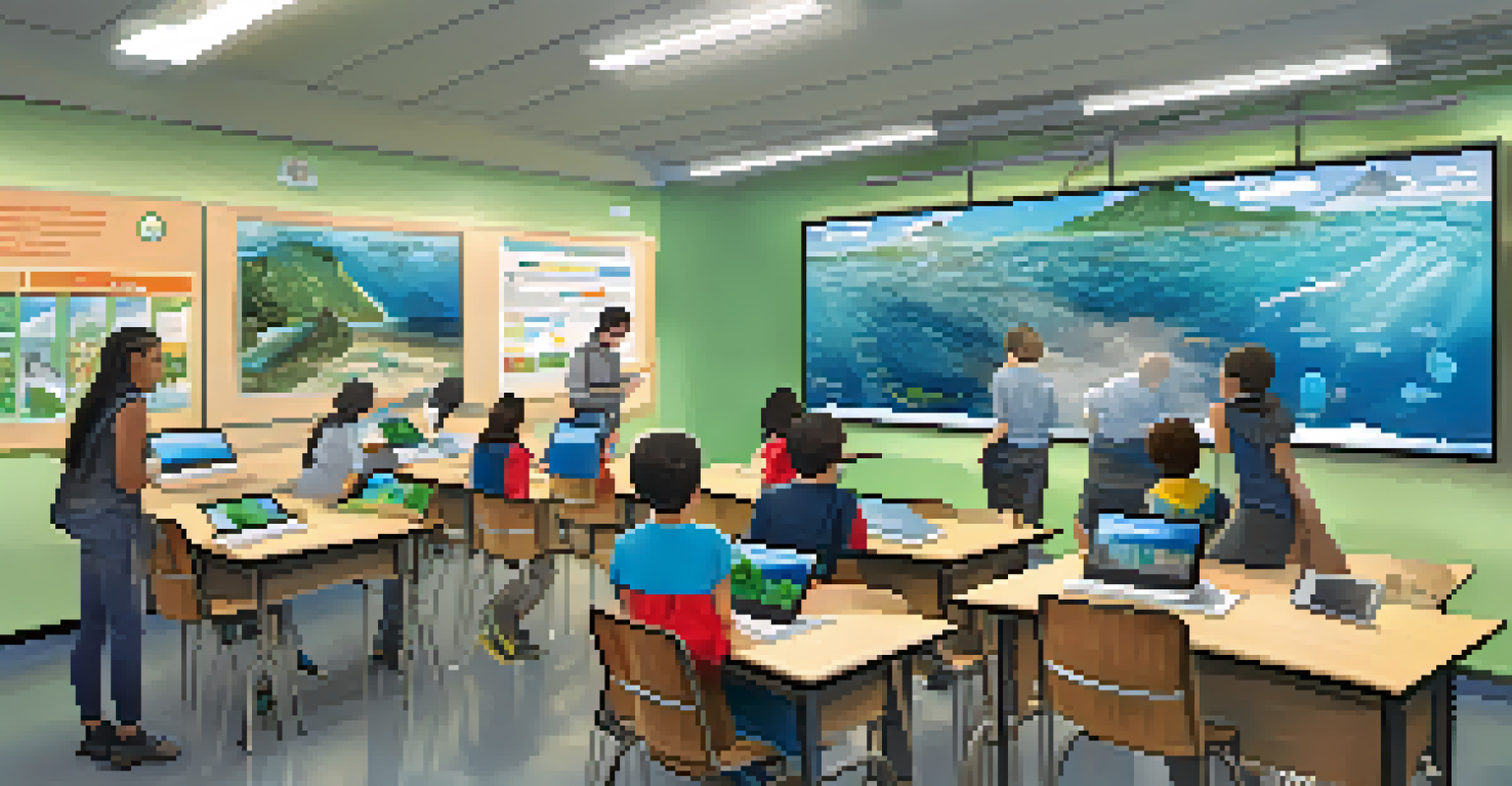Environmental Education Programs: A Colorado Case Study

Understanding the Importance of Environmental Education
Environmental education is crucial for fostering a sense of stewardship towards nature. In a world facing climate change and biodiversity loss, educating the younger generation is more important than ever. Programs designed around these principles equip students with the knowledge and skills needed to make informed decisions about environmental issues.
Education is the most powerful weapon which you can use to change the world.
Moreover, these programs encourage critical thinking and problem-solving skills. By engaging students in hands-on activities, they learn how to analyze environmental problems and develop potential solutions. This approach not only enhances their academic experience but also prepares them for real-world challenges.
In Colorado, the emphasis on environmental education reflects the state's commitment to sustainability. With its diverse ecosystems and natural beauty, the state serves as an excellent backdrop for learning about environmental science and conservation practices.
Key Players in Colorado's Environmental Education Scene
Various organizations contribute to the rich tapestry of environmental education in Colorado. From schools to non-profits and government agencies, each plays a unique role in promoting sustainability. For instance, the Colorado Alliance for Environmental Education (CAEE) works tirelessly to support educators and enhance curriculum development.

Additionally, local governments often partner with educational institutions to provide resources and funding for environmental programs. This collaboration ensures that students have access to quality education and hands-on experiences in nature. Such partnerships can lead to community-based projects that further engage students and foster a sense of responsibility.
Environmental Education's Importance
Environmental education is vital for nurturing a sense of responsibility towards nature, especially in a time of climate change.
Finally, outdoor education organizations like Outward Bound and the Rocky Mountain Conservancy provide immersive experiences that connect students with the environment. These programs not only teach valuable skills but also inspire a lifelong appreciation for nature.
Innovative Programs Reshaping Environmental Education
In Colorado, innovative programs are emerging to make environmental education more impactful. One such initiative is the 'Eco-Schools' program, which guides schools in creating sustainable practices on their campuses. This hands-on approach allows students to learn about sustainability while making a real difference in their school environment.
The environment is where we all meet; where we all have a mutual interest; it is the one thing all of us share.
Another exciting development is the integration of technology into environmental education. Programs utilizing apps and online platforms help students track their local ecosystems or participate in citizen science projects. This tech-savvy approach resonates with today’s youth, making learning more engaging and relevant.
Moreover, many programs are focusing on outdoor classrooms to bring lessons to life in a natural setting. This experiential learning helps students connect theoretical knowledge with real-world applications, fostering deeper understanding and retention of environmental concepts.
The Role of Community Involvement in Education
Community involvement is vital in enhancing environmental education programs. When local organizations and residents collaborate, they can create a stronger support system for schools. This partnership not only enriches the educational experience but also fosters a sense of community responsibility toward environmental stewardship.
Volunteers often play a key role in these initiatives, offering their time and expertise to facilitate learning. For example, local farmers or conservationists can share their knowledge, providing students with firsthand insights into sustainable practices. This real-world engagement makes lessons more relatable and impactful.
Community's Role in Education
Community involvement enhances environmental education by fostering collaboration and providing real-world learning experiences.
Additionally, community events like clean-up drives or tree-planting days encourage students to apply what they’ve learned. These activities help reinforce classroom lessons and inspire a sense of pride in their local environment, creating a cycle of learning and action.
Challenges Facing Environmental Education in Colorado
Despite the successes, environmental education in Colorado faces several challenges. Funding is often a significant barrier, as many programs rely on grants and donations. When budgets are tight, environmental education can be one of the first areas to see cuts, limiting students' access to these vital programs.
Another challenge is the varying levels of access to quality education across different regions. Rural areas may struggle with fewer resources, resulting in disparities in environmental education opportunities. This inequity can hinder students' ability to engage with and understand environmental issues.
Lastly, the ongoing impacts of climate change can complicate educational efforts. As weather patterns shift, outdoor programs may face cancellations or modifications, disrupting learning experiences. Educators must continuously adapt their approaches to ensure students remain engaged and informed.
Success Stories from Colorado's Educational Initiatives
There are numerous success stories that highlight the effectiveness of environmental education in Colorado. For instance, students from a local high school successfully launched a recycling program that significantly reduced waste on their campus. This initiative not only taught them about waste management but also empowered them to enact change within their community.
Another notable example is a partnership between a nearby conservation organization and elementary schools, focusing on local wildlife. Students participated in field trips to observe animals in their natural habitats, which sparked a newfound interest in biology and conservation. These experiences often lead to lasting impacts on students' educational paths and career choices.
Challenges in Environmental Education
Funding limitations and regional disparities present significant challenges to accessing quality environmental education in Colorado.
These success stories serve as powerful reminders of the potential that environmental education holds. By inspiring young minds, these programs can cultivate a generation of environmentally conscious individuals who are ready to tackle future challenges.
Future Directions for Environmental Education in Colorado
Looking ahead, the future of environmental education in Colorado appears promising. With growing awareness of climate issues, there is an increasing demand for educational programs that address sustainability. Schools and organizations are likely to expand their curricula to include more in-depth discussions on climate change and conservation.
Furthermore, technology will continue to play a pivotal role in shaping these educational initiatives. As innovative tools become more accessible, educators can integrate virtual reality experiences and interactive simulations to enhance learning. This evolution will help keep students engaged and make complex topics easier to understand.

Finally, fostering collaboration among various stakeholders will be crucial for the continued growth of environmental education. By bringing together schools, community organizations, and government agencies, Colorado can create a more cohesive approach to teaching sustainability, ensuring that all students have the opportunity to engage with these important issues.